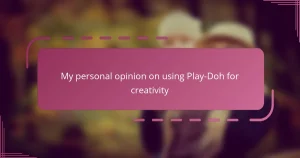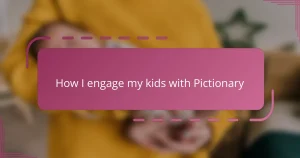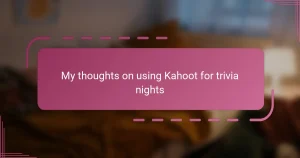Key takeaways
- Jenga enhances critical thinking, fine motor skills, and hand-eye coordination in children while promoting confidence and resilience.
- Effective teaching of Jenga rules involves clear explanations, demonstrations, and encouraging questions to foster understanding and calmness in handling mistakes.
- Encouraging strategic thinking through advance planning and verbalizing thought processes cultivates deeper problem-solving skills in kids.
- Making the game fun with challenges and creative house rules transforms Jenga into an engaging learning experience filled with laughter.
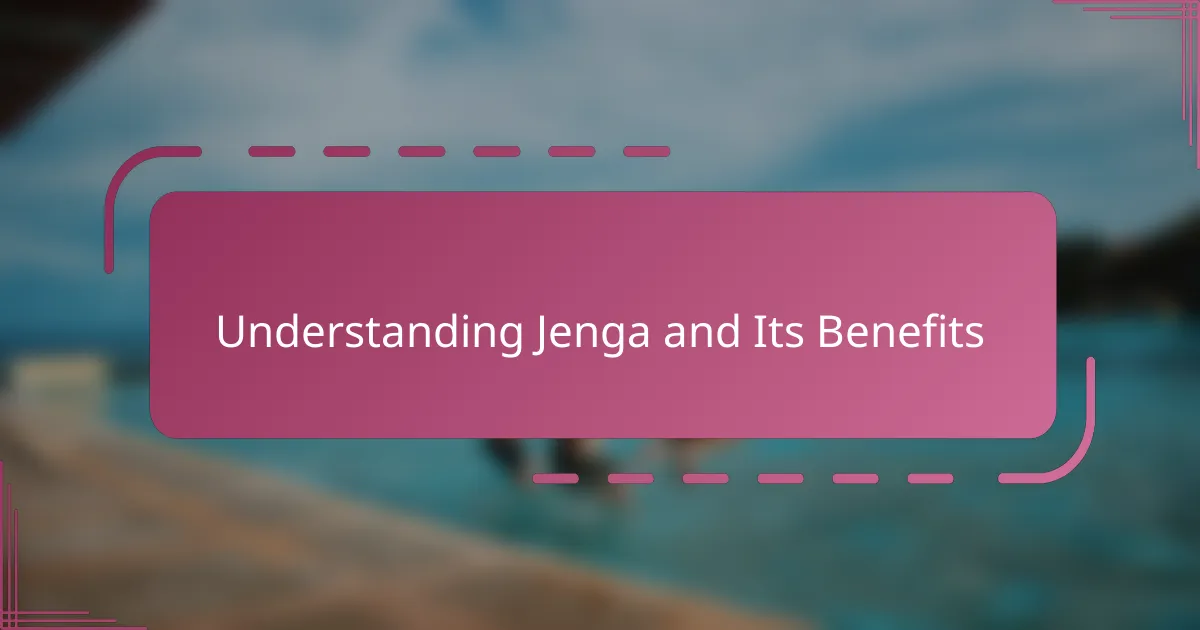
Understanding Jenga and Its Benefits
Jenga is more than just a simple stacking game; it’s a test of patience, strategy, and steady hands. When my kids first played, I noticed how focused they became, carefully considering each move—a clear sign that Jenga sharpens critical thinking. Have you ever watched someone weigh the consequences of their actions with such intensity? That’s what makes this game so powerful for developing problem-solving skills in children.
Beyond the mental exercise, Jenga naturally encourages fine motor skills and hand-eye coordination. I’ve seen my youngest light up with pride when they finally managed to pull out a tricky block without toppling the tower. Those small victories boost confidence and resilience—qualities every parent wants to nurture.
What really surprises me, though, is how Jenga brings out the best in family interaction. It’s not just about winning; it’s about laughing together, learning patience, and practicing turn-taking. Doesn’t it feel great to find an activity that mixes fun with meaningful growth? For me, Jenga hits that sweet spot perfectly.
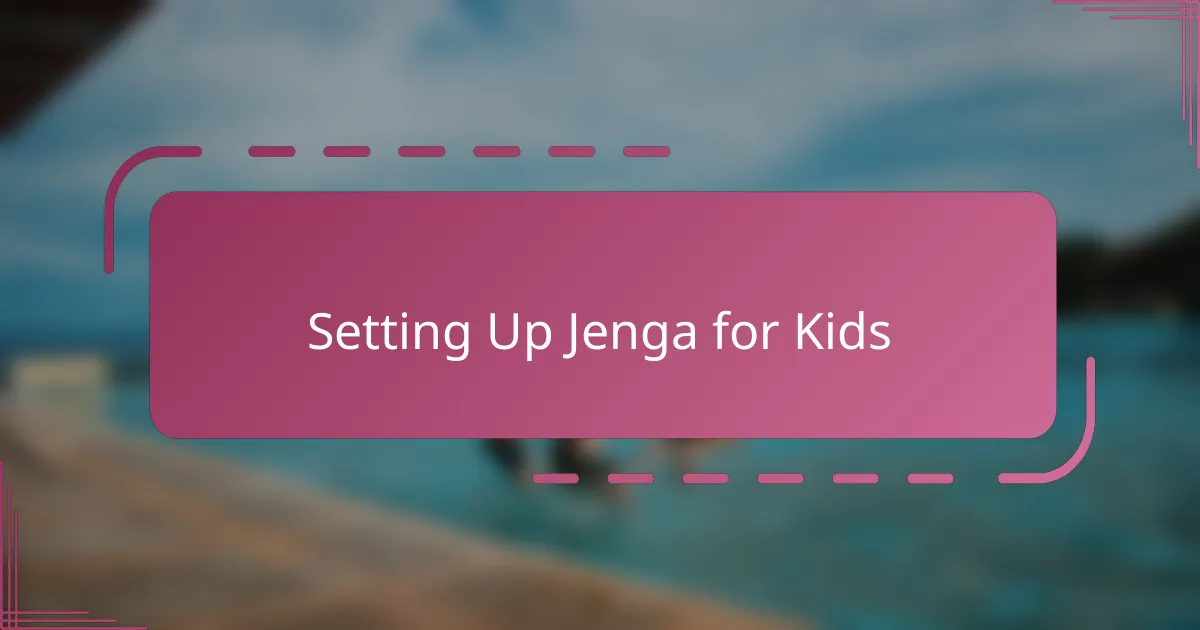
Setting Up Jenga for Kids
Getting Jenga ready for my kids always starts by finding the perfect spot where we can all gather comfortably. I like to clear the table completely because a clutter-free space helps my kids focus and prevents any accidental knocks. Have you noticed how even a small distraction can throw off their concentration?
Next, I carefully stack the wooden blocks into the classic tower formation, making sure each row is tightly aligned. I remember once when the tower was a bit wobbly right from the start—the whole game turned into a quick lesson about stability and patience. That moment turned into a wonderful teachable experience about paying attention to details.
Sometimes, I modify the setup depending on their mood or skill level. For younger kids, I start with fewer layers, which gives them a sense of achievement as the tower grows taller. Isn’t it amazing how a simple change in setup can keep the challenge fresh and keep them eager to play again?
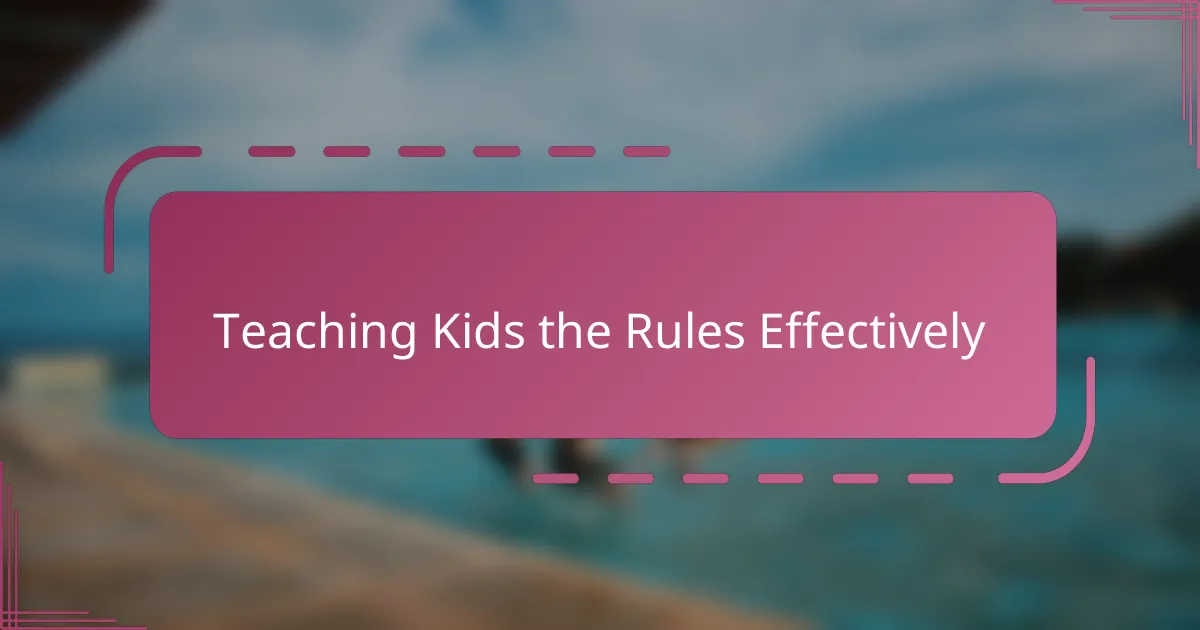
Teaching Kids the Rules Effectively
Teaching the rules of Jenga to my kids has always been about making the instructions clear but fun. I noticed that when I explain the rules step-by-step and demonstrate a move or two, their eyes light up with understanding rather than confusion. Isn’t it so much easier to grasp a game when you see it in action instead of just hearing about it?
I also like to encourage questions during that explanation phase because it gives me a window into what they truly understand or might be hesitant about. Sometimes, my youngest will ask, “But what if the block falls?” which opens up a great chance to talk about handling mistakes and staying calm—lessons that go way beyond the game. These moments have made teaching the rules feel like a conversation, not a lecture, which really helps them remember how to play with confidence.
Another trick I’ve found effective is reinforcing the rules through consistent practice rather than overwhelming them at once. For example, focusing on the one-block-at-a-time rule until it becomes second nature before introducing strategies keeps things manageable. Have you ever noticed how kids absorb rules faster when they can try them out immediately? That’s exactly what I’ve experienced time and again with Jenga.

Encouraging Strategic Thinking
Strategic thinking really comes alive when my kids start planning their moves ahead of time. I encourage them to ask themselves, “Which block can I remove without risking the tower’s fall?” Watching them weigh options reminds me how this simple question sparks deeper problem-solving skills. Have you seen a child pause thoughtfully before making a move? That moment tells me they’re truly engaged in strategy.
Sometimes, I challenge my kids to explain their thinking out loud as they play. It’s fascinating to hear their reasoning, even if it’s rough around the edges. Sharing these thought processes not only boosts their confidence but also helps me guide them gently toward better tactics. Isn’t it amazing how talking through a plan can clarify ideas and build stronger thinking habits?
I also mix things up by adding mini-challenges, like removing blocks only from certain rows or colors, which forces them to rethink their usual strategies. These twists keep their minds sharp and flexible—two key traits for strategic thinkers. I’ve noticed that these fun adaptations turn a casual game of Jenga into a brain workout my kids eagerly return to time and again.
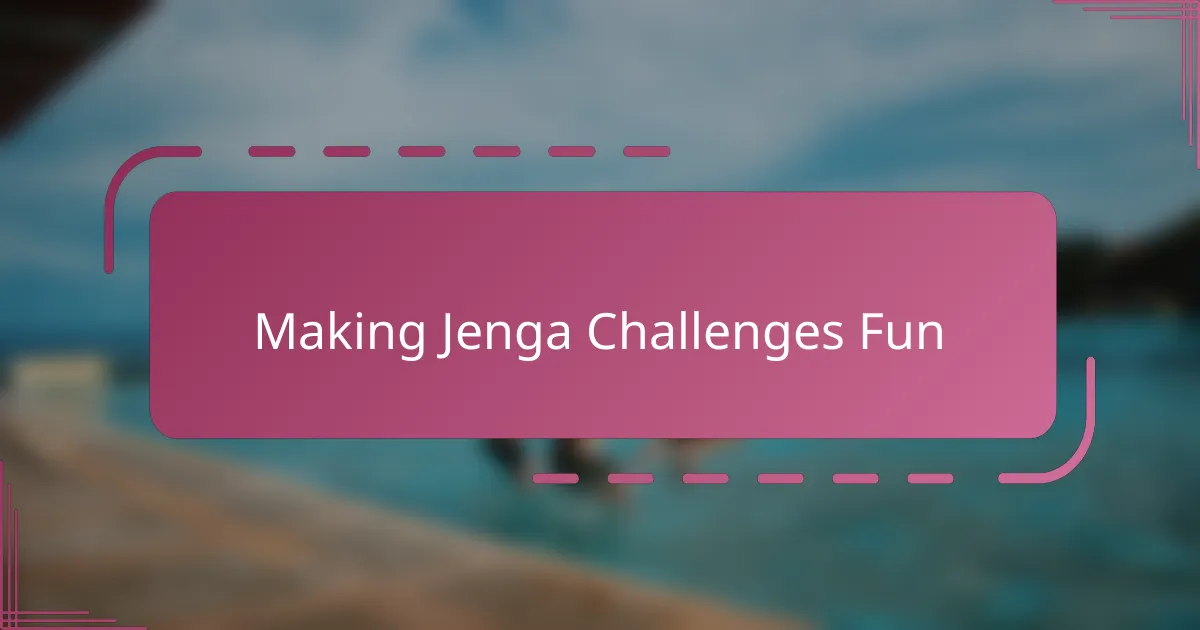
Making Jenga Challenges Fun
Making Jenga challenges fun for my kids often means turning the game into a playful experiment. Sometimes, I suggest they try pulling out blocks with their non-dominant hand or even using just one finger. Have you ever seen their faces light up with surprise and delight when something so simple suddenly feels like a totally new challenge? Those moments keep their enthusiasm alive.
I also love sprinkling in little rewards or silly consequences for tricky moves, like the first person to topple the tower has to do a funny dance. It adds a layer of excitement that makes the game about more than just steady hands—it’s about shared laughter and light-hearted competition. Doesn’t laughter make learning even better?
Another trick I use is to let my kids create their own house rules from time to time. Once, my daughter insisted on removing only blocks that rhyme with their number—an imaginative twist that left us all giggling and thinking twice about each move. Giving them creative freedom transforms the game into a personal challenge, turning frustration into fun and keeping Jenga fresh for every round.
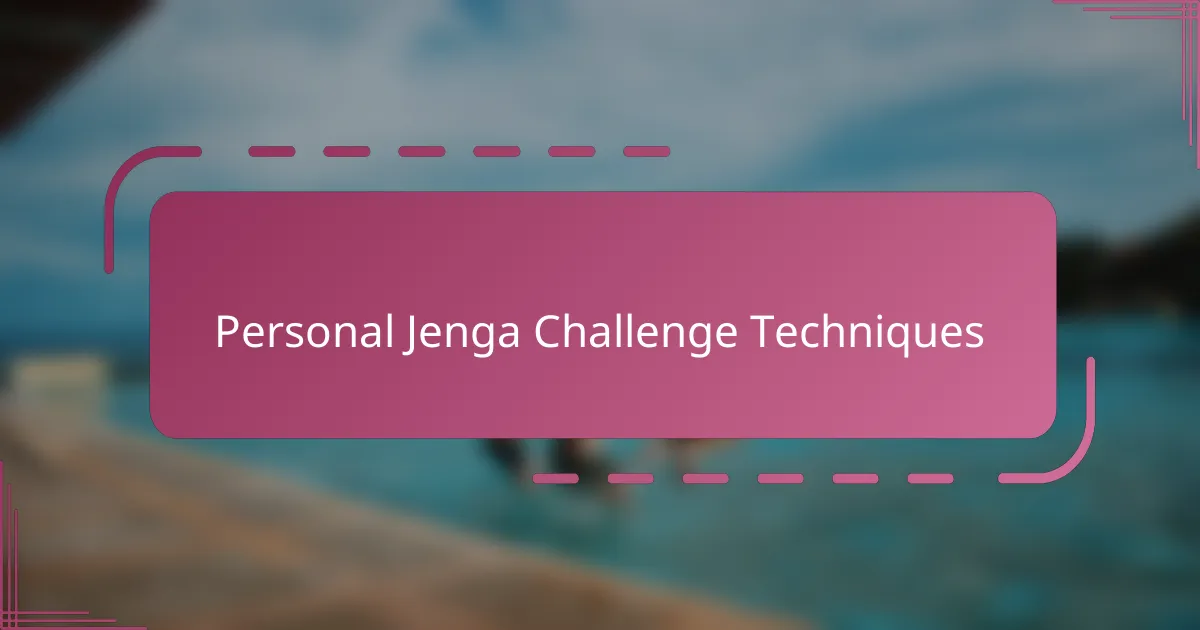
Personal Jenga Challenge Techniques
One technique I love to use is setting time limits for each move, turning the game into a fast-paced challenge that really tests my kids’ nerves and decision-making under pressure. Have you ever noticed how a ticking clock shifts their focus and energy? It’s incredible to see them scramble for the best block while staying calm—it’s a real confidence booster when they pull it off.
Sometimes, I introduce “mystery blocks” marked with a tiny sticker, where pulling one means a special challenge, like balancing on one foot or naming three animals. These unexpected twists add a playful layer of suspense that keeps my kids on their toes. Doesn’t mixing physical and mental tasks make a game like Jenga feel like a whole new adventure?
Another favorite personal method is asking my kids to verbalize their move choices aloud. Hearing their reasoning sometimes surprises me with how creative or cautious they’ve become. Have you ever found that simply explaining your thought process out loud helps you see the situation more clearly? It’s a small step that builds their strategic thinking and makes the game feel like a shared learning experience.
